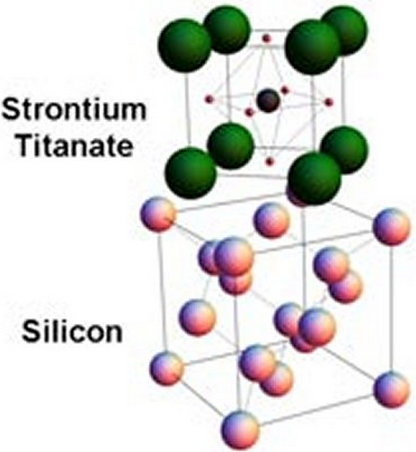Instant-on computers possible with ferroelectric materials
November 15, 2011

Atoms of strontium titanate and silicon (credit: D. Schlom)
Researchers from three NSF-supported Materials Research Science and Engineering Centers have added ferroelectric capability to silicon (used in computer transistors) — a feat that scientists have tried to achieve for more than half a century.
Cornell University materials scientists led by Darrell Schlom deposited strontium titanate onto silicon, forcing the silicon to squeeze the strontium titanate into ferroelectric state with re-orientable electric polarization.
Ferroelectric materials — found in ATM and other smart cards — could eliminate time-consuming booting and rebooting of computer operating systems by providing an “instant-on” capability and pave the way for memory devices that are lower-power, higher-speed, and more convenient to use. The materials may also help prevent losses from power outages.
Ferroelectric materials provide low-power, high-efficiency electronic memory. Smart cards use the technology to instantly access and store updated information when they’re waved before a reader. A computer with this capability could instantly provide information and data to the user.
